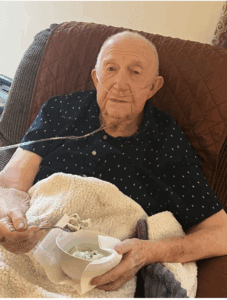One of the most common questions I receive from consultees is how to make EMDR therapy their main modality and transition into being an EMDR therapist. They see the ease and comfort I have in my own practice as an EMDR therapist as well as in the group practice I co-founded. They want to emulate this and are stuck, not knowing the steps to take. However, what they don’t see are the years of work, education, training, consultation, client sessions, blood, sweat, and tears that went into building my clinical practice into what it is today. Cultivating a culture of EMDR therapy in your individual work with clients as well as your clinical setting is possible by being mindful of the following considerations.
Shift your focus from clinical tool to clinical modality. Since its conception, the view on EMDR therapy shifted from a tool to use within therapy to an all-encompassing treatment modality. By viewing it as such, the approach is altered from having specific EMDR sessions in which you wave your fingers in front of your clients to engaging in EMDR therapy from day one with a client even without bilateral stimulation. Working through the 8 phases of EMDR therapy and understanding the effects of traumas/adverse experiences, further integrates EMDR therapy as a clinical modality. There are many insights and breakthroughs that occur in identifying the origins of negative beliefs and their associated traumas/adverse experiences. Knowing the power of these insights takes the pressure off of rushing into phase 3-6 when a client is not fully prepared and resourced and further highlights the benefits that occur even outside of reprocessing sessions emphasizing a culture of EMDR therapy within your practice.
Have the motto “we can process that!” I constantly have my ears open to potential targets and am known to say, to a bit of chagrin of my clients, “we can process that!”. Not all traumas/adverse experiences are disclosed at the beginning of treatment. Sometimes they are slow to reveal themselves because a client isn’t ready or is just ignorant that these potential targets are affecting their current functioning. With all the advanced EMDR topic trainings targeting specific symptoms and issues, there is potential for an endless number of special protocols. However, you do not have to be specially trained if you have a strong understanding of the basic EMDR therapy protocol and are competent in working with the specific population. Though there may be special considerations with different populations, you can target and process anything that proves to be a trauma/adverse experience. Attend consultation sessions and EMDR networking groups to listen to other clinicians’ experiences in identifying shrouded targets. The more you practice your EMDR skills, the more you will hone your intuition about what constitutes a good target.
Identify yourself as an EMDR Therapist. It is a self-fulfilling prophecy; if you identify as one, you are one. Introduce yourself as an EMDR therapist, which will give you ample opportunity to discuss your treatment approach with potential clients and referral sources. As you become more established, clients will seek you out specifically for EMDR therapy further cultivating the culture of EMDR therapy within your practice. I regularly receive requests from potential clients looking specifically for EMDR therapy indicating a familiarity with this modality. Initially after being trained in EMDR therapy, however, I had to convince all my clients to try this new-fangled therapy. It was a shift from their conceptualization of traditional talk therapy to a culture of EMDR therapy in which we identified potential trauma targets and used bilateral stimulation to desensitize and reprocess these targets. Despite my immediate enthusiasm for EMDR therapy, not all of my clients were as convinced, and it took some time, effort, educating, and demonstrating to create a culture of EMDR therapy within my own practice.
Get the word out. The more publicity and discussions about EMDR therapy, the more mainstream it becomes as a treatment modality. We can cultivate a culture of EMDR therapy in our clinical settings by addressing the effects of traumas/adverse experiences on the brain and explaining the Adaptive Information Processing model. Share the EMDR love with your friends and family. Post information and articles about the effects of trauma/adverse experiences and EMDR therapy on your social media. Host informational sessions at your practice or place of employment and work EMDR therapy into any presentations you are giving as a mental health provider. Network with other EMDR therapists by joining EMDRIA and regional network groups. If you are at an agency, hosting an informational session as a brown bag lunch can help education your colleagues in EMDR therapy. Also, ask your clients to provide testimonials about their experiences with EMDR therapy to their other healthcare providers..
Cultivating a culture of EMDR therapy can be an arduous process. You will constantly have to explain, reinforce, and reframe people’s beliefs about EMDR as a whole therapy framework. By jumping right into the 8 phases and identifying yourself as an EMDR therapist though, you will quickly begin to shift your practice to an EMDR therapy framework. Looking for potential targets within the therapeutic setting and getting the word out about EMDR therapy whether it is within your personal circle or at your practice or agency further cultivates a culture of EMDR therapy within your individual clinical practice as well as within your practice or agency. It will be well worth the effort as you process your clients’ traumas/adverse experiences helping them to achieve a higher level of healing.














